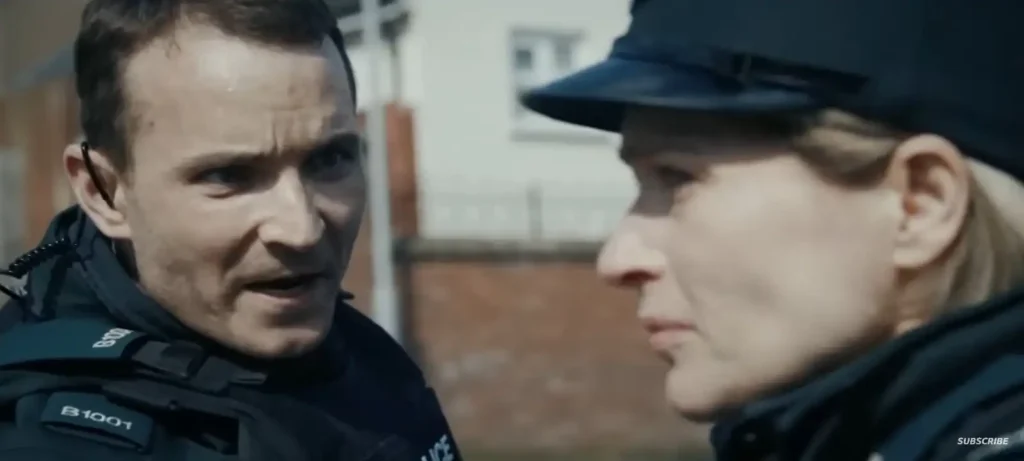In the heart of Belfast, where the echoes of the Troubles reverberate through time, a television drama emerges from the shadows, transcending the clichés that often shroud crime narratives. “Blue Lights” isn’t just another cop show; it’s a visceral journey through the harrowing streets, where every beat is fraught with danger, and the thin blue line is stretched to its limits.
The Unforgiving Landscape
Set against the backdrop of Belfast, “Blue Lights” thrusts us into a nightmarish beat, where officers, or peelers as they are colloquially known, navigate a terrain saturated with hostility. The Troubles and sectarian violence cast a long, chilling shadow, making every step a test of courage. Officers face not just the usual challenges but a relentless barrage of spit, bricks, and bottles – a daily reminder of the volatile reality they confront.
Unveiling the Characters
At the core of this gripping narrative are three rookies, each a finely crafted portrayal of resilience and vulnerability. Annie, seemingly impervious but haunted by her own demons; Grace, a former social worker with a mission to heal a wounded city; and Tommy, the anthropological adventurer choosing a path less traveled. Their initiation into the chaos is both heart-wrenching and riveting.
Tommy, in particular, serves as our lens into this chaotic world, guided by the seasoned Gerry Cliff. Gerry, a copper of indomitable spirit, challenges conventions with his irreverent wisdom. “Don’t be a notebook wanker, lad,” he quips, embodying the gritty ethos of those who patrol the streets.

Layers Unveiled
“Blue Lights” weaves a tapestry of raw, relentless storytelling, unraveling layers with each passing episode. The narrative isn’t just a chronicle of crime; it’s a symphony of horrifying moments punctuated by genuine, laughter-inducing levity. The dark humor becomes a coping mechanism in a world where tragedy lurks at every corner.
A Tapestry of Intrigue
As MI5, the elusive “sneaky beakies,” shadows the city, Gerry takes it upon himself to unveil the truth. The OOB zones, the hamstrung police, and the pervasive sense of unease form the backdrop for a gripping investigation. Peripheral characters like Happy and PC Jen aren’t mere plot devices; they’re integral to the narrative, adding depth and nuance.
Climactic Resonance
The climax of “Blue Lights” is a gut-wrenching crescendo, marked by a devastating TV death that lingers in the viewer’s mind. The show achieves what few can – a delicate balance between heart-stopping intensity and poignant humanity.
A Belfast Version of The Wire
Forget the comparisons to Line of Duty; “Blue Lights” is more akin to a Belfast rendition of The Wire. Like its Baltimore counterpart, it captures the essence of societal decay, where the challenges faced by police officers mirror the decay of the system they serve.
A Bucket Man’s Odyssey
Stevie’s profound words encapsulate the essence of policing in “Blue Lights.” A police officer is a “bucket man” – enduring the torrents of challenges, carrying the weight, and striving to leave it behind at day’s end. It’s not just a job; it’s a relentless odyssey, a thrilling examination of everyday courage and rebellion.
In conclusion, “Blue Lights” transcends the confines of a crime drama. It’s a testament to the indomitable spirit of those who navigate the treacherous beats of Belfast, a narrative that resonates long after the credits roll. The show isn’t just a contender; it’s a standard-bearer, a beacon of storytelling excellence in the ever-evolving landscape of television. As the echoes of its narrative reverberate, “Blue Lights” stands poised to ascend the rankings, leaving an indelible mark on the tapestry of television excellence.
Tags:
Blue Lights TV show
Belfast crime drama
Troubles-inspired series
Peelers in Belfast
Gerry Cliff character
Raw storytelling
Belfast police drama
Crime series excellence
TV death in Blue Lights
The Wire comparison

